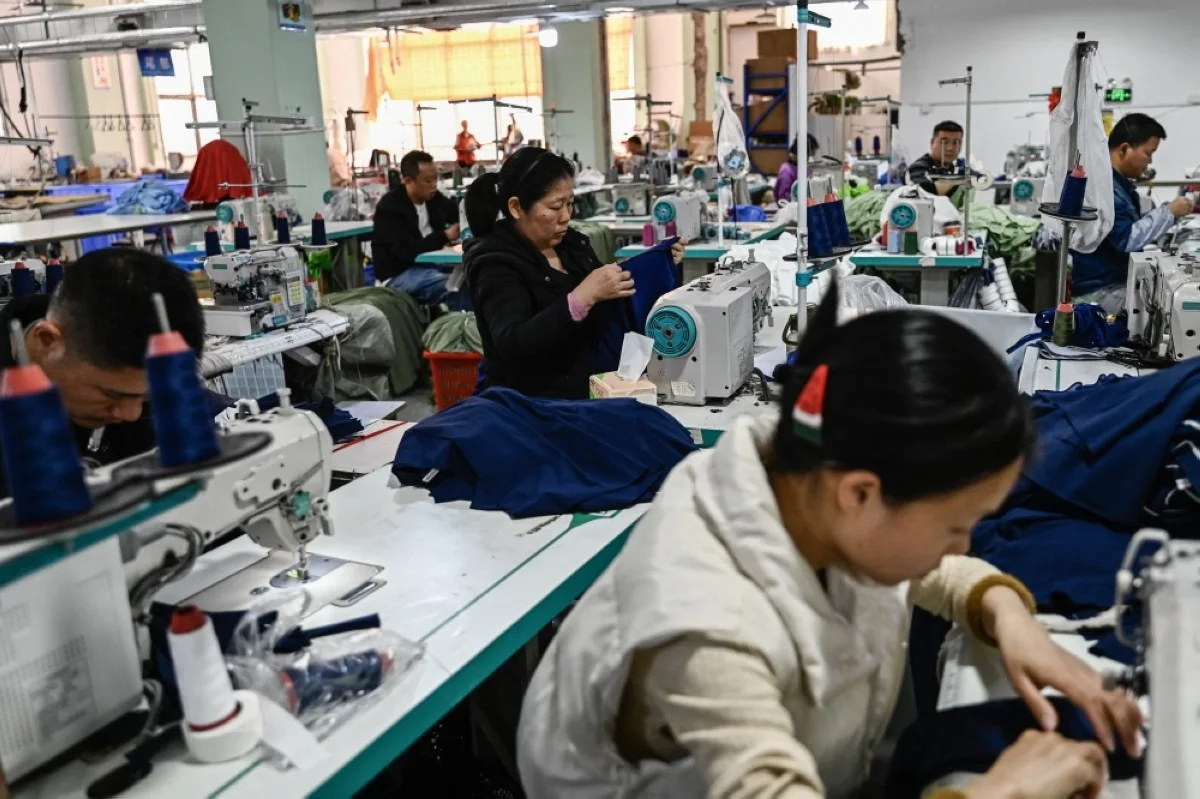China’s Manufacturing Sector Faces Pressure from U.S. Tariffs Amid Trade Tensions

In a small office inside the commercial heartland of China, Andy Xiao, the owner of Weida New Materials, is grappling with the big challenges posed via the escalating exchange tensions between United States and China. His commercial enterprise, which specializes in generating artificial leather for shoe manufacturers, is feeling the burden of additional price lists imposed by way of former President Donald Trump. These new obligations, specially a 10 percent tariff on Chinese imports, have started to take a toll on Xiao’s firm, which is based heavily on exports to the USA. As change relations between the two countries sour, Xiao’s employer and plenty of others in China’s production zone are dealing with an unsure destiny.
Impact of U.S. Tariffs on Chinese Businesses
Since Trump’s management brought the brand new tariff rules, many Chinese agencies had been stuck within the crossfire. The tariffs, which affect a extensive range of products from China, could potentially effect loads of billions of dollars in exchange. For Xiao’s enterprise, the extra customs duties are already causing a widespread pressure, with clients inquiring for lower costs in reaction to the higher fees. With an growing possibility of further hikes, Xiao is worried about the future of his enterprise version, that is closely reliant on exports to the U.S. Market.
“If exports run into insurmountable hurdles, we may be compelled to change our commercial enterprise version,” Xiao admits. He explains that his corporation may additionally flip to home markets if the U.S. Will become too difficult to navigate, notwithstanding his organization’s initial method of that specialize in international sales. While many producers in China have relocated operations to Southeast Asia to keep away from the growing tariffs, Xiao remains cautious. He believes that businesses shifting to Southeast Asia face numerous unforeseen demanding situations, which includes difficulties in receiving payments and currency exchange troubles.
Migration of Factories and Risks of Global Supply Chains
In recent years, many producers in China’s southern province of Guangdong, especially in Dongguan and Guangzhou, have moved their operations to Southeast Asia. This migration is largely driven by means of the preference for lower labor expenses and to avoid an increasing number of stringent trade policies between Beijing and Washington. However, no matter these obvious benefits, many of the agencies that relocated to Southeast Asia have encountered large risks, which includes past due payments and complications related to overseas currencies, which have made the pass much less appealing for a few.
While Xiao’s employer has resisted relocating, he acknowledges that the transferring global deliver chain dynamics pose a severe chance. For example, numerous suppliers have already moved operations, however they are frequently faced with headaches that they hadn’t expected. According to Xiao, the dangers worried in running outdoor China’s borders—particularly in phrases of monetary settlements—are vast, and many organizations have struggled to live afloat in those new environments.
E-Commerce Giants and the Resilience of the Garment Industry
Despite the looming threat of price lists, some factories continue to be optimistic approximately their prospects, specifically those generating items for famous e-commerce systems like Shein and Temu. These platforms, which have hastily gained reputation inside the United States, were in large part successful in navigating the complexities of global alternate by way of taking advantage of a U.S. Policy referred to as the de minimis exemption. This rule lets in goods worth $800 or less to enter the United States responsibility-free. However, Trump’s tariff regulations have complicated this, and it’s far uncertain how the U.S. Will address this trouble within the destiny.
Zhu, a manufacturing unit supervisor in Guangzhou who produces clothes for these e-commerce giants, is fairly upbeat in spite of the challenges. He believes that so long as the U.S. Keeps to depend upon imports from China and Southeast Asia, the future of the garment processing enterprise remains strong. He points out that the U.S. Is not likely to supply enough of its very own clothing, meaning that there’ll constantly be call for for low priced, outsourced manufacturing. As a result, the factories in Guangzhou, which supply Shein and comparable groups, are experiencing a surge in orders, while tariffs continue to upward push.
China’s Response and Continued Optimism in Manufacturing Hubs
The Chinese authorities has expressed its firm competition to the U.S. Tariffs and has carried out reciprocal measures. However, Beijing is also going through its personal set of monetary challenges, consisting of slowing boom, a debt disaster within the belongings quarter, and high unemployment amongst younger people. Despite those struggles, the southern manufacturing hubs, specifically in Guangdong, remain resilient.
In the metropolis of Zhongshan, a supervisor named Zhong became unconcerned by means of the change tensions. He noted that the region’s production area remains busy, and he’s optimistic that the Chinese authorities will find a method to mitigate the effect of the price lists. For workers inside the vicinity, who commonly come from rural elements of China, the focal point remains on the production procedure rather than the broader geopolitical issues.
“The manufacturing is busy, so we simply awareness on that,” said Peng, a employee in a Guangzhou manufacturing unit. While workers might not be immediately concerned with the broader alternate disputes, factory managers and enterprise owners are honestly worried about the destiny. The uncertainty surrounding the tariff hikes and alternate regulations has cast a shadow over the complete industry.
Looking Ahead: A Changing Landscape
The ongoing change battle between China and the US keeps to have far-achieving effects for groups in each nations. For small and medium-sized manufacturers like Xiao’s, the impact is already being felt, and there’s concern that it’ll worsen inside the coming years if tariffs are improved. Companies will need to conform to the converting panorama, whether or not thru diversifying their markets, relocating their operations, or rethinking their business fashions.
Despite the challenges, the resilience of China’s production sector remains obtrusive. E-commerce giants like Shein have demonstrated that there is nevertheless demand for lower priced products made in China, even amidst growing tariffs. The future of China’s production industry will rely upon how quickly companies can modify to the shifting dynamics of world alternate and how China’s government responds to the demanding situations posed through the US. Only time will inform how these ongoing tensions will reshape the panorama of worldwide exchange.


